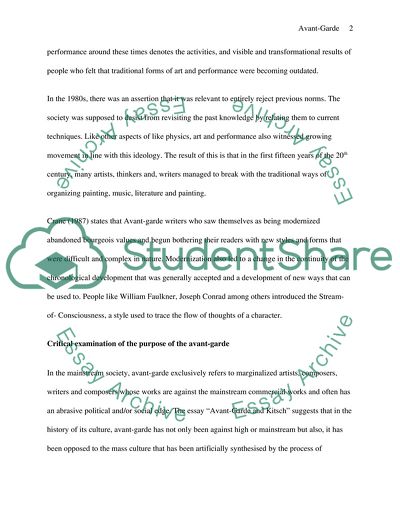Cite this document
(“Modern and Avant-garde art Essay Example | Topics and Well Written Essays - 2500 words”, n.d.)
Retrieved from https://studentshare.org/visual-arts-film-studies/1430573-modern-and-avant-garde-art
Retrieved from https://studentshare.org/visual-arts-film-studies/1430573-modern-and-avant-garde-art
(Modern and Avant-Garde Art Essay Example | Topics and Well Written Essays - 2500 Words)
https://studentshare.org/visual-arts-film-studies/1430573-modern-and-avant-garde-art.
https://studentshare.org/visual-arts-film-studies/1430573-modern-and-avant-garde-art.
“Modern and Avant-Garde Art Essay Example | Topics and Well Written Essays - 2500 Words”, n.d. https://studentshare.org/visual-arts-film-studies/1430573-modern-and-avant-garde-art.


